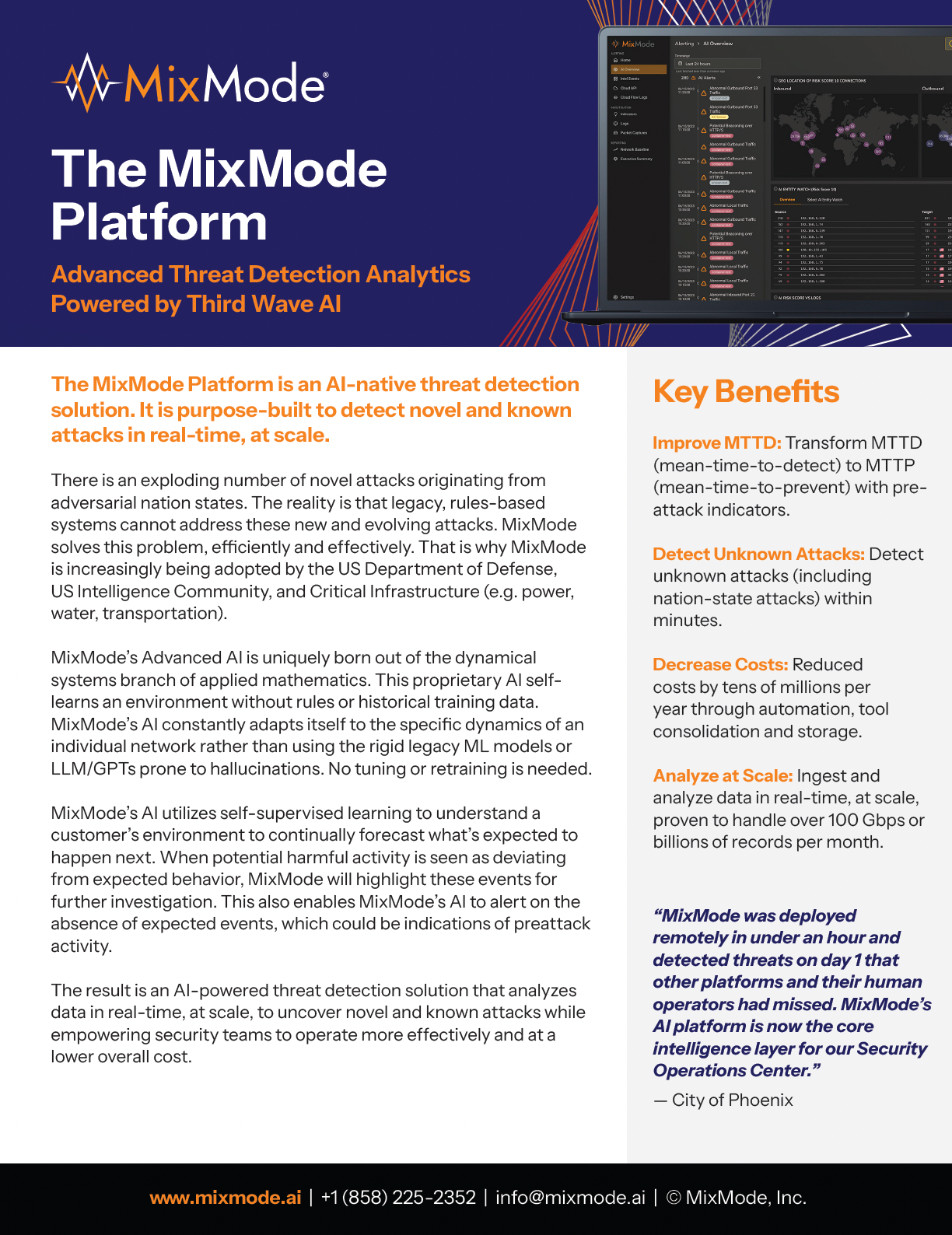Nation-state actors and advanced adversaries are escalating the pace and sophistication of their attacks. Leveraging zero-day exploits, AI-generated tactics, and stealth techniques, these campaigns are designed to bypass legacy, rules-based, and signature-driven security tools. The inability to detect these previously unseen threats in real-time leaves critical infrastructure and government organizations vulnerable, often discovering breaches only after significant damage has occurred.
MixMode’s self-learning AI provides real-time detection of unknown and novel attacks within minutes—even those leveraging zero-day exploits or AI-driven methods. Unlike traditional tools, MixMode continuously builds an evolving forecast of normal activity, enabling it to spot deviations indicative of stealthy nation-state campaigns. This empowers security teams to rapidly identify and stop sophisticated, previously unseen threats before they can escalate, ensuring stronger defense against the modern threat landscape.

Click the button below to download the Platform Data Sheet.


